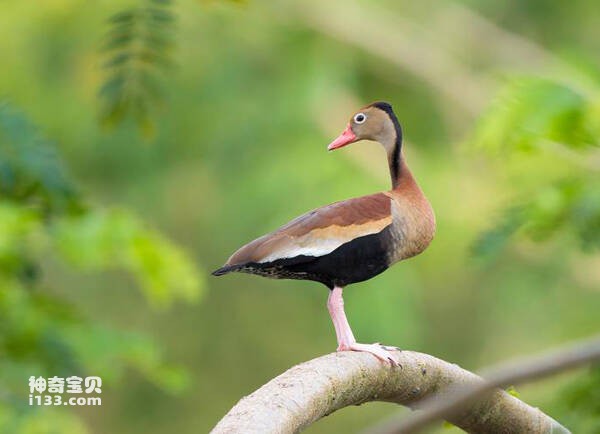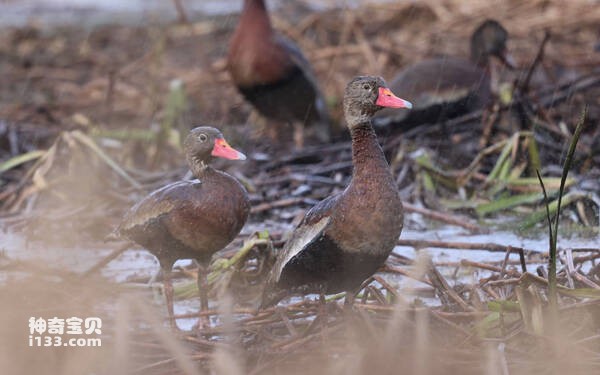Dendrocygna autumnalis
IUCN
LCBasic Information
Scientific classification
- name:Dendrocygna autumnalis
- Scientific Name:Dendrocygna autumnalis,Black-bellied Whistling-duck,Black-bellied Whistling Duck
- Outline:Waterfowl
- Family:
Vital signs
- length:48-53CM
- Weight:No textual research information is available
- lifetime:No textual research information is available
Feature
It has a long red beak and long legs, a long light gray head, and the body feathers are also mostly grayish-brown, and the belly and tail are black
Distribution and Habitat
Origin: Antigua and Barbuda, Argentina, Aruba, Barbados, Belize, Bolivia, Brazil, Canada, Colombia, Costa Rica, Cuba, Dominica, Ecuador (Galapagos), El Salvador, French Guiana, Guadeloupe, Guatemala, Guyana, Honduras, Martinique, Mexico, Montserrat, Nicaragua Panama, Paraguay, Peru, Puerto Rico, Saint Kitts and Nevis, Saint Lucia, Saint Vincent and the Grenadines, Suriname, Trinidad and Tobago, United States, Bolivarian Republic of Venezuela
Travelers: Bahamas, Cayman Islands, Chile, Gambia, Grenada, Jamaica, Virgin Islands
It lives in plant-rich ponds, lakes, reservoirs and other waters, but also appears in forest marshes and surrounding ponds and streams covered with plants. They prefer to hide in tall grass or under lotus leaves, and also live in groups on water, but usually avoid open lakes.
Appearance
The black-bellied duck is 48-53 cm long. It has a long red beak and long legs; Long head light gray; The body feathers are mostly grayish brown; The belly and tail are black; The neck and upper body were rich maroon; Gray cheeks and upper neck; The irises are brown with distinct white eye rings. The wings can be seen in flight with a large white color on the wings, which is formed by the secondary flight feathers, while the primary flight feathers are black and the wing coverings are brown. Both sexes are similar; Young and adult ducks are also similar, but have a gray beak and a reduced color contrast on the belly.
Details
The Black-bellied Whistling Duck (Dendrocygna autumnalis) has two subspecies: Black-bellied Whistling Duck and black-bellied whistling duck.

Black-bellies can feed both on the surface and underwater, and sometimes on the ground near the water to forage for grass. The food is mainly plant food such as rice, crop seedlings, grasses and aquatic plants, but also animal food such as insects, snails, mollusks, frogs and small fish. Tree ducks usually fly in groups of a few to a few dozen at dusk to feed in nearby rice paddies and return to their daytime waters before dawn.

Black-bellies are very unique ducks that have strong monogamous pairing cooperation. The pair often live together for many years and behave like geese. Breeding season May to July. Usually nests in tree holes. They also make use of chimneys, abandoned buildings or nesting boxes, which have been increasingly provided in recent decades, especially in southeast Texas and Mexico.

Listed on the International Union for Conservation of Nature (IUCN) 2012 Red List of Threatened Species ver 3.1 - Not Threatened (LC).
Protect wild animals and eliminate wild meat.
Maintaining ecological balance is everyone's responsibility!








